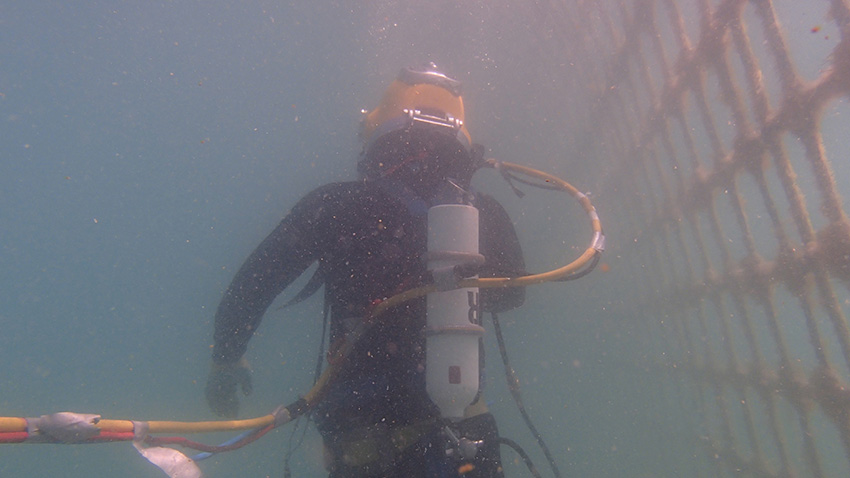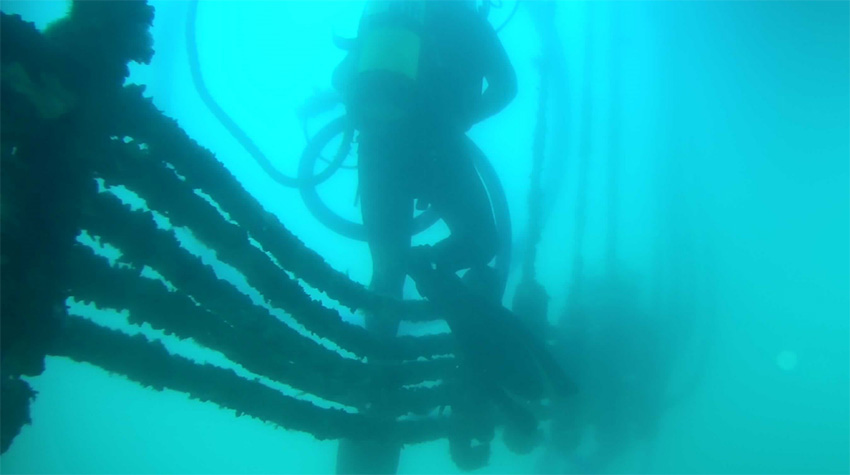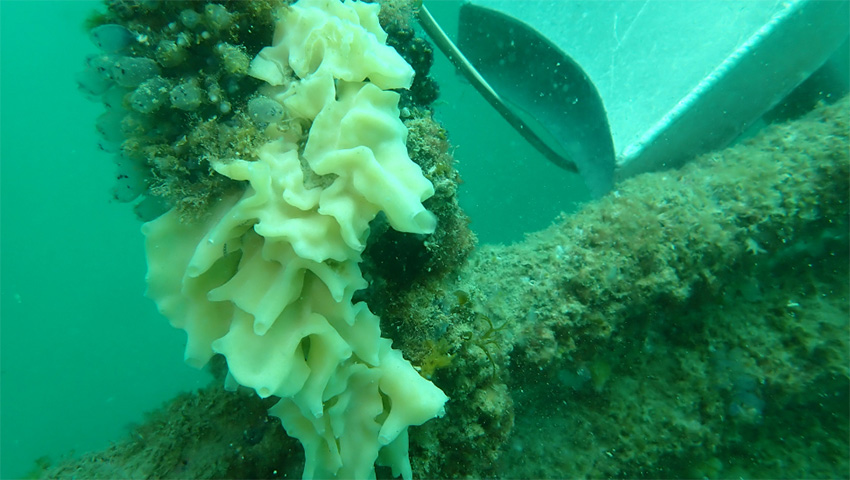Didemnum vexillum, popularly known as Sea Pancake or Carpet Sea Squirt, is an increasingly common marine pest found around the world. The Department of Defence engages companies such as Ventia to facilitate regular surveys monitoring Australian Navy waters, enabling early detection of the invasive species.
In April 2020, the Department of Primary Industries and Regional Development (DPIRD), commissioned by Ventia, identified Sea Pancake at HMAS Stirling, WA. Ventia brought in marine maintenance experts Indianic Group to collaborate with DPIRD to ensure the marine pest was brought under control.
Sea Pancake is typically transported when attached to marine vessels and with its spongy texture, looks like dripping or bubbling pancake batter.
The significant increase and spread of Sea Pancake has become a public health, economic, and environmental issue around the world. It contains pathogenic bacteria, transports marine diseases and threatens aquaculture through its ability to grow over shellfish and negatively impact fish breeding.
Ventia’s Regional Operations Manager WA, Phil Darling, coordinated the collaborative response once the species was identified:
“HMAS Stirling is an important part of Defence naval capability and an environmentally sensitive site, so we needed to act quickly to control the invasive marine pest with minimal impact on Defence capability.”
Indianic Group was able to inspect, clean and recover suspect species using a vacuum system, in a first for Sea Pancake removal. Indianic adapted its processes to ensure nil impact to Naval vessels and has completed 3,500 minutes of dive time to date, collecting 245kg of sea growth, with 8-10% identified as Didemnum vexillum.
 |
 |
“The equipment we use is commercially available, but we took three or four different pieces and put them together to make the vacuum system that clears the Sea Pancake from ships’ hulls, wharf piles or wherever we find it,” says James Watson, Indianic General Manager. “It’s an inventive, cost-effective solution, which avoided having to design one from scratch.”
James notes that an additional innovation is the power source because the system is powered by hooking into their boat’s hydraulic system.
The whole process was a collaborative affair, as DPIRD used both classroom and in-water dive training to ensure Indianic was able to identify Didemnum vexillum, while Indianic familiarised DPIRD with the use of the vacuum system and the procedure for collecting suspect species. The Sea Pancake management procedures were also collaboratively developed and have since been shared with DPIRD’s state counterpart in NSW.
Ventia’s Regional Operations Manager in WA, Phil Darling, says ongoing monthly meetings are held with Defence and other contractors to ensure learnings are shared, as Sea Pancake threatens ports around Australia. DPIRD and Indianic participate as required, providing expert advice and ensuring best practice procedures are available to all.
According to James Watson the partnership with Ventia has been very important for Indianic Group. Over the years, it’s helped the business transform itself from being purely a diving contractor, to a surface and underwater construction and maintenance company.
“It’s been a long-term relationship and it’s fostered the growth of Indianic,” James says. “We’ve gone from a business that years ago did no design work to now, where we’ve got an engineer in-house, 23 full-time employees and a dozen casual staff that we draw upon.”
“The dream is to have our people qualified both as divers and in the trades,” James says. “The availability of underwater work can be somewhat limited, but for surface maintenance tasks around wharves and harbours, there’s much more scope for growth, particularly during Defence-related projects.”

While the removal of invasive Sea Pancake provides an example of collaboration for an underwater project, the repair of hill-top potable water tanks at HMAS Stirling originally brought Ventia and Indianic together for a surface maintenance project. After winning a tender to repair the tanks, Ventia completed most of the external works, but brought Indianic on to re-line the tanks and install a new section of roof.
“Of all our clients, I would say Ventia is the one most responsible for increasing our capabilities,” James says. “The relationship is giving us opportunities to bid for work that traditionally we wouldn’t have even been thought of for.”
Find out more about our Defence capabilities at www.ventia.com/defence


